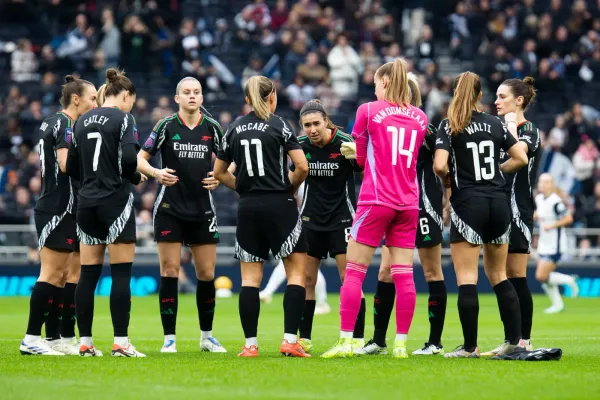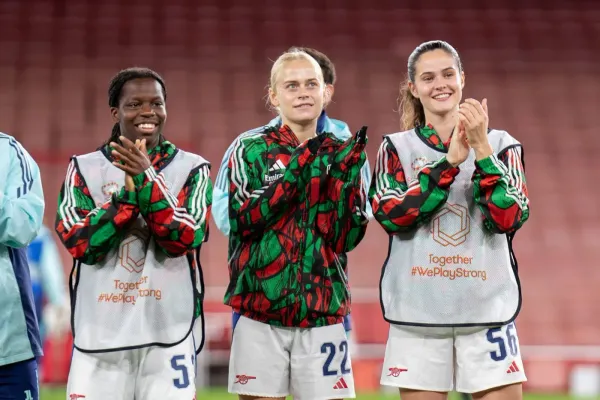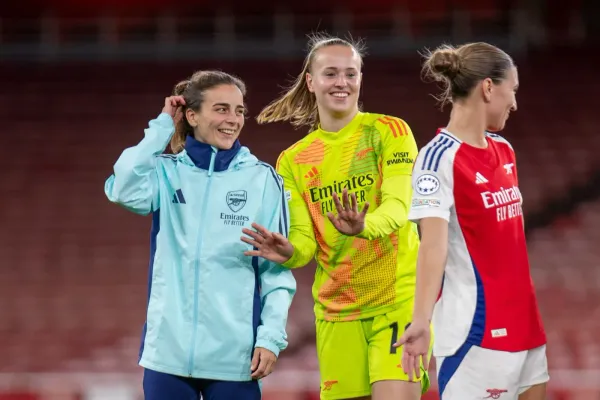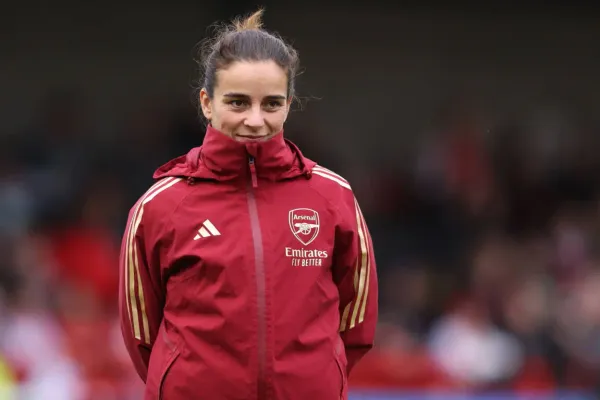The high tree catches all the wind
On Leah Williamson’s swift return to form
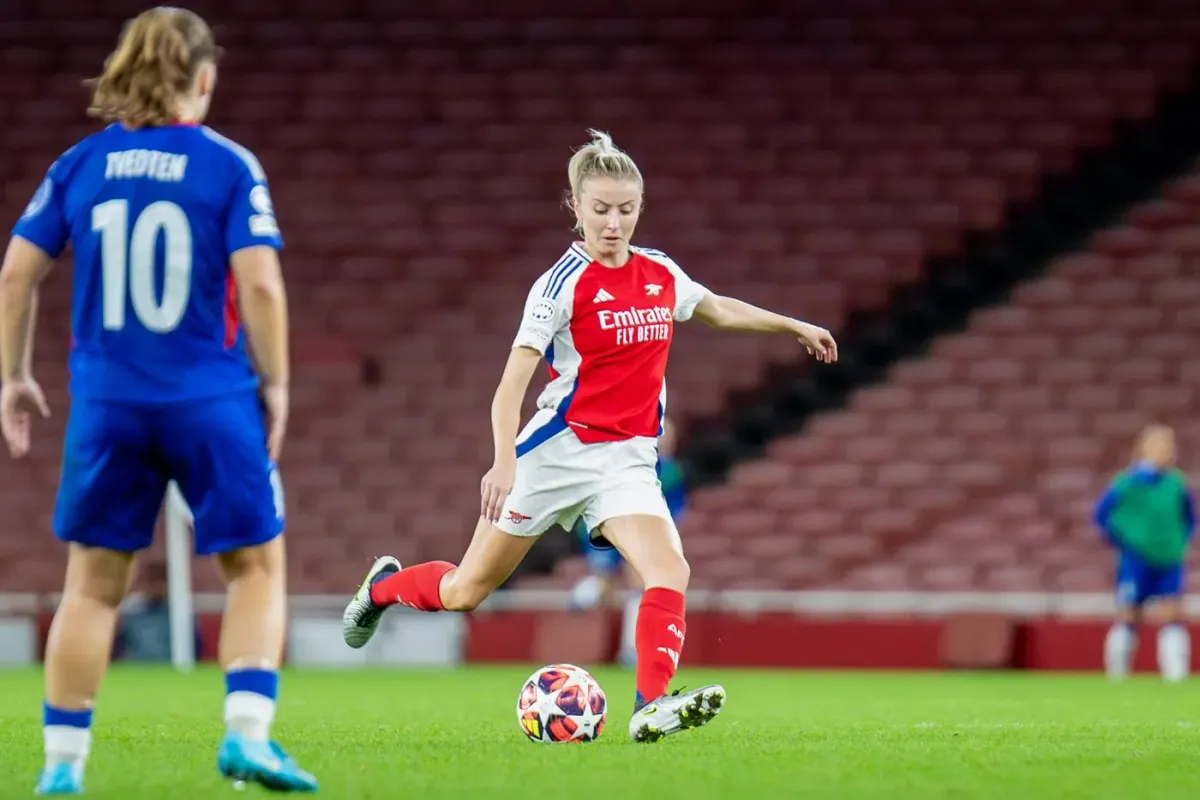
‘In the Netherlands we have a saying, the high tree catches all the wind.’ This was Renee Slegers’ answer when quizzed about Leah Williamson’s form in October. It is natural that Williamson’s form was questioned after a couple of shaky performances for England during the international break and her display against Chelsea for Arsenal, a game where lots of eyes really are on you.
Given Williamson’s standards and her profile, criticism of performances is to be expected. While it would disrespect Leah’s talent to describe the aforementioned games as anything other than below her best, there was a little mitigation I felt. Firstly, she did not take any part in the final game before the October international break, Arsenal’s 2-0 win at West Ham.
Williamson was an unused substitute and didn’t even warm up with the other subs ahead of the game. When Renee Slegers decided to give Emily Fox a breather at 2-0 it was 18-year-old Katie Reid who came on and played at right-back. I asked Slegers about this after that game and she said, somewhat cryptically, ‘We are just managing her, she has played a lot of minutes, it has been a big block for us so we are just managing her.’
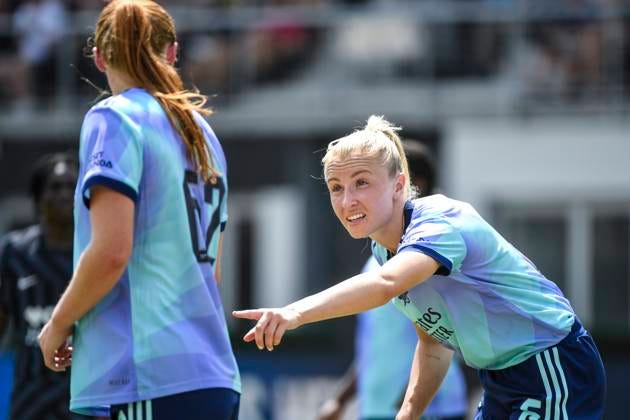
It was an evasive answer, Williamson had played 316 of the 900 minutes Arsenal had played since the first leg of their UWCL qualifier against Hacken after missing a few games with concussion. The lack of public clarity over her physical condition continued when she joined up for international duty and initially trained separately from the group with England, before starting both games against Germany and South Africa. Again, we weren’t told why she was training separately from the group.
Clearer communication over her condition might have abated some of the criticism she faced but maybe there was a good reason for that. It is quite possible the calculation still holds that being discrete and taking a bit of criticism in the process was the way to go. Players medical information is essentially private after all. Nonetheless, clearly performances were impacted, caveats or not.
Her form became such a focus for fans of opposing clubs that when Chelsea’s Johanna Rytting Kaneryd and Erin Cuthbert celebrated a goal together by comically raising their hands in the air, fans on social media initially felt it was a jibe at Williamson. Some had noticed the sight of her raising her hand at the officials as an attacker negotiated their way past her, a sight that became far more familiar than we are used to.
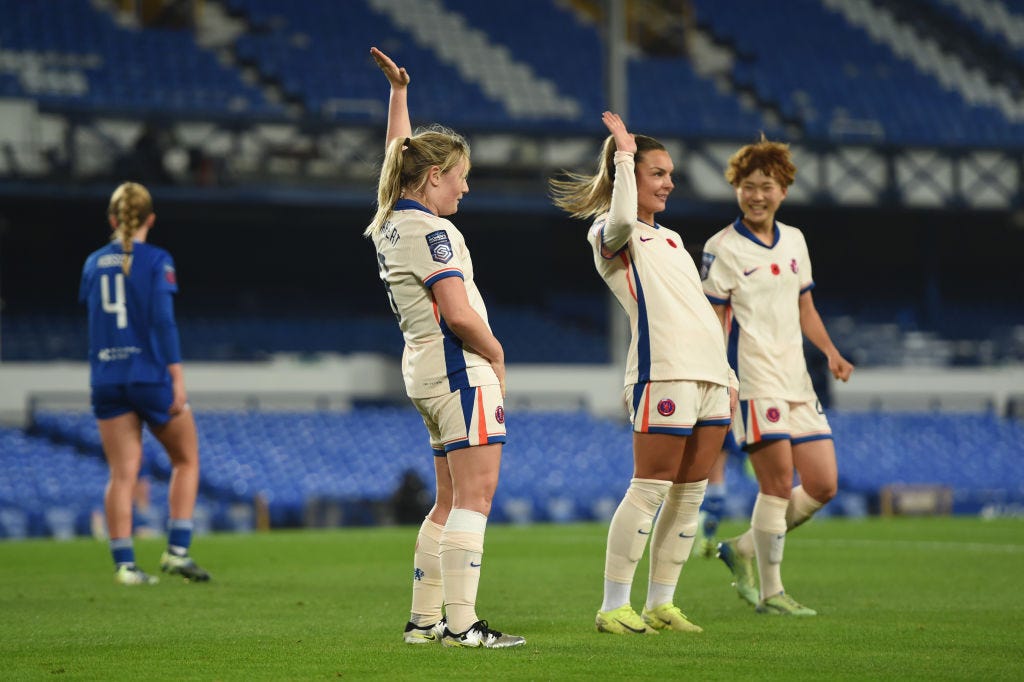
Cuthbert and Aggie Beever Jones were quick to clarify that was not the case and Cuthbert felt strongly enough about discrediting the inferences that she provided proof of a youth team goalkeeper saving a shot in training with an especially limp raised arm. But the fact so many fans felt it to be a meme about Leah says enough about the ridicule she was experiencing from opposing fans. (Which I do not say any air of morality, this is a natural part of football fandom).
Williamson’s response has been as one would expect of a consistently high class performer. She stayed quiet and started performing to her usual standards again very quickly. I interviewed Leah after her first game back from her ACL injury at Reading in January. I asked her whether she had been deliberately ‘quiet’ during rehabilitation, shunning publicity or refraining from sharing any images or anecdotes from her rehab on her social media channels.
‘I have always worked hard in silence almost. I love that we get to come out on the pitch and put on a show. That is what I love about football and what is a lovely moment every weekend when you come out with the fans and you get to bond that way. But there are some things you have to do on your own and are your business.’
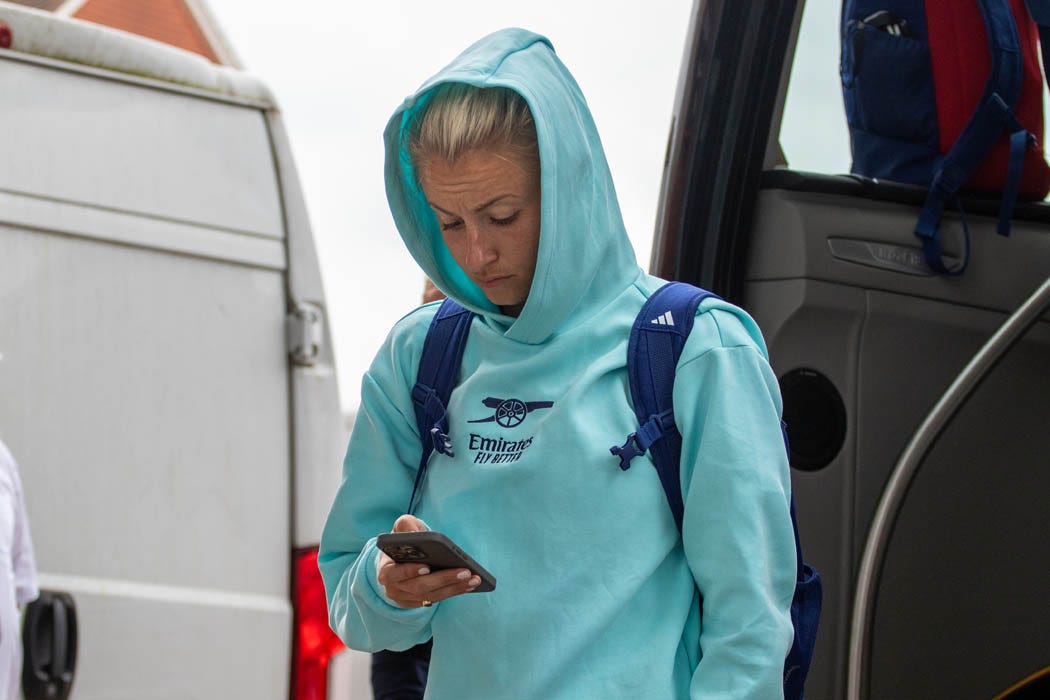
Williamson hinted at physical issues in an interview with BBC Sport prior to the North London derby, ‘I feel like for the first time I am in a place where I feel like a real footballer again. I can train every day, I can train at the weekend. I've not had the best luck in the world and that's OK, that's life.’
Since returning from international duty, Williamson has joined many of her Arsenal teammates in looking a lot more like her old self. It sounds as though whatever physical ailments she was experiencing are less of an issue. I also suspect Renee Slegers’ slight reconfiguration into the 325 build up shape (which I wrote about here) has seen Williamson take on a slightly more central role in the middle of a back three.
Typically, we have seen Williamson as the right centre-half and her array of passing from the right half space has always been excellent. Now that Arsenal build a little more distinctly in a back three with Williamson in the middle, it has opened up the pitch for her a little. If you look back at Arsenal’s opening goal in the North London derby, the move starts with Williamson fading the ball forward from left centre to left, an angle I think she might not have glimpsed in the previous iteration of the structure.
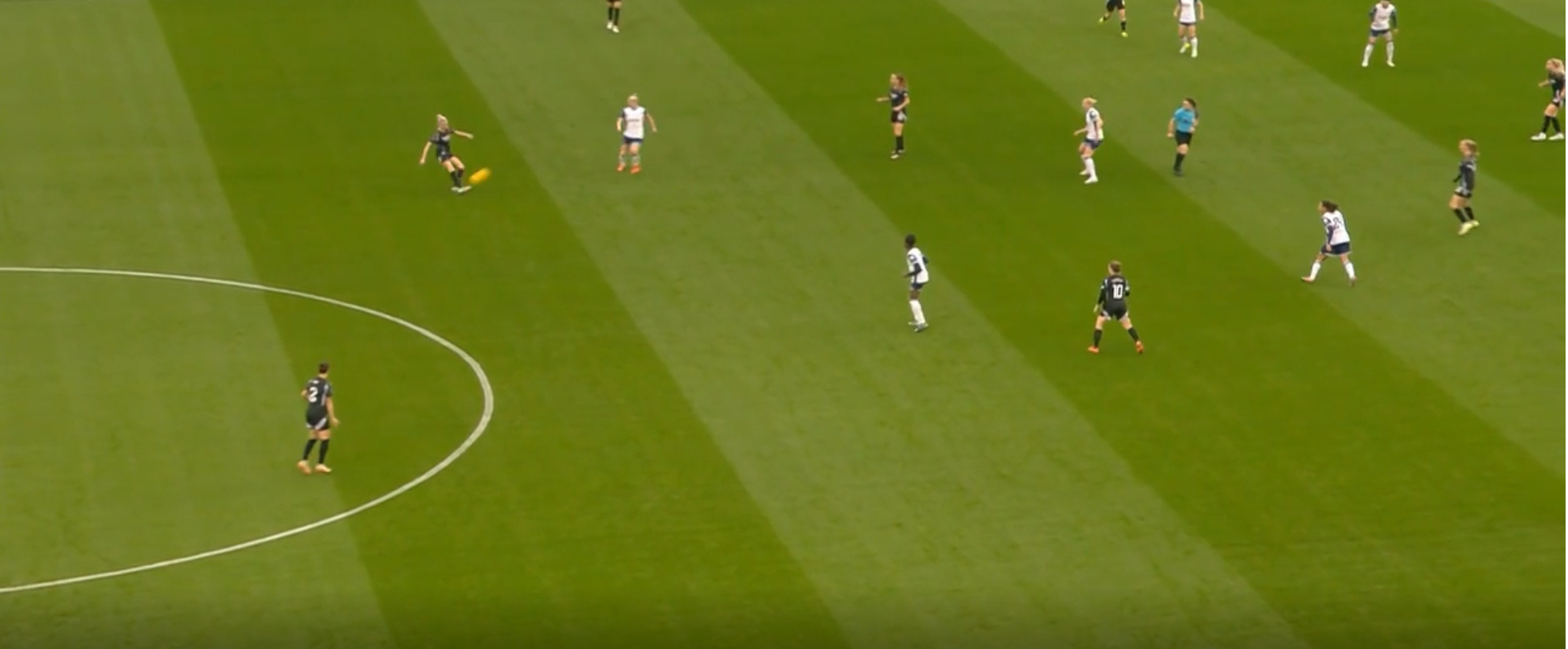
In the build-up to the second goal on Saturday, we see her again in a pretty central position and her pass to Maanum provokes the passing move that leads to the second goal.
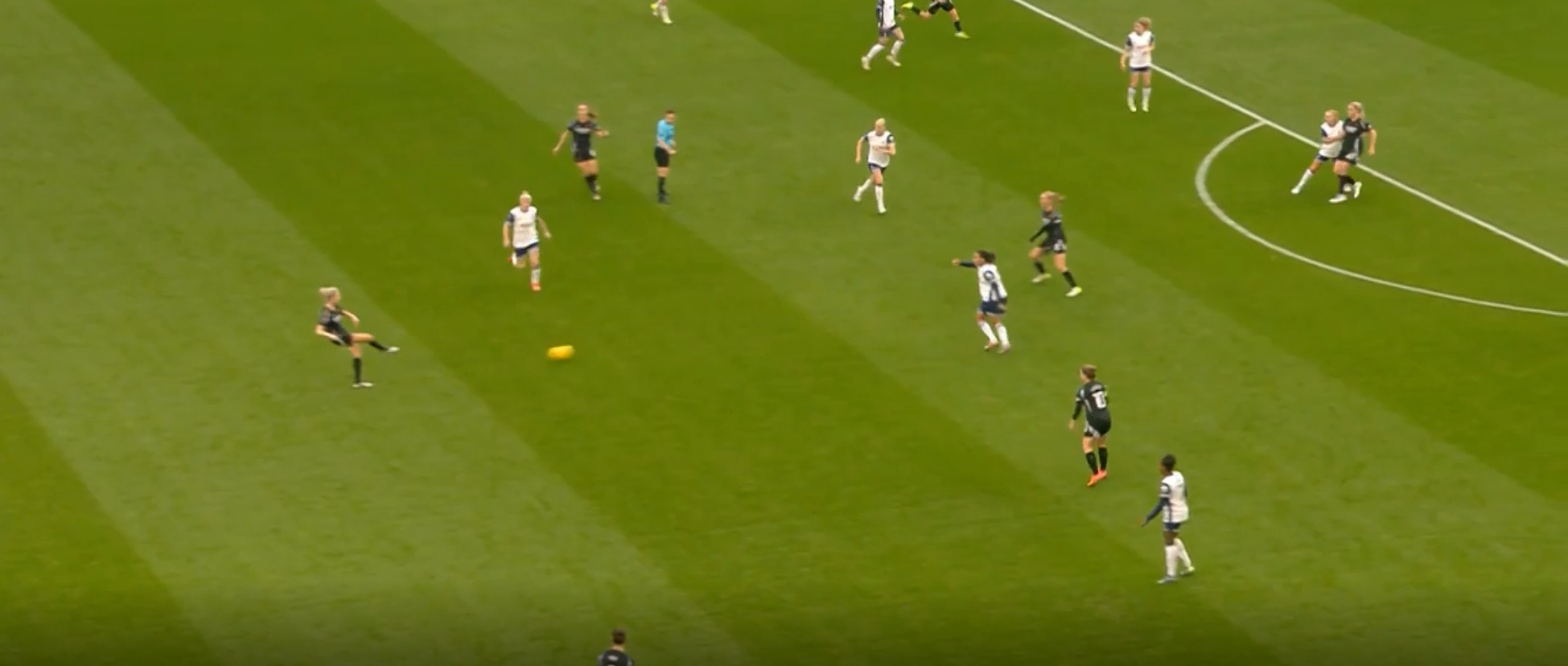
However, when Arsenal build on the right, we still do see her lean towards that right touchline when Emily Fox pushes on. Once again, the opening goal against Juventus is a move provoked by a Williamson pass in the sort of right half space we are very accustomed to seeing her in.
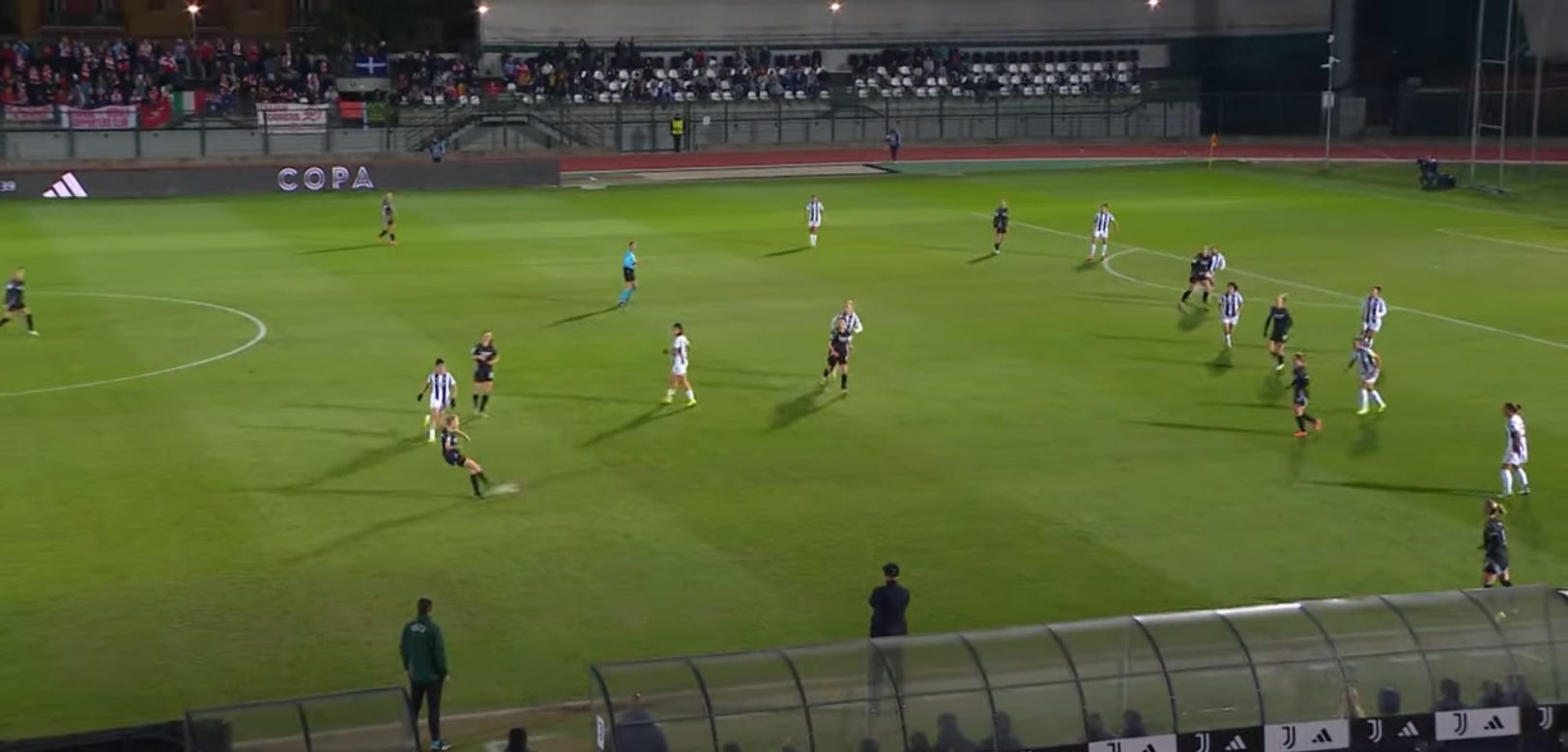
Likewise, Caitlin Foord’s goal against Brighton signals the end of a move started by a pass from Williamson from her familiar right half-space.
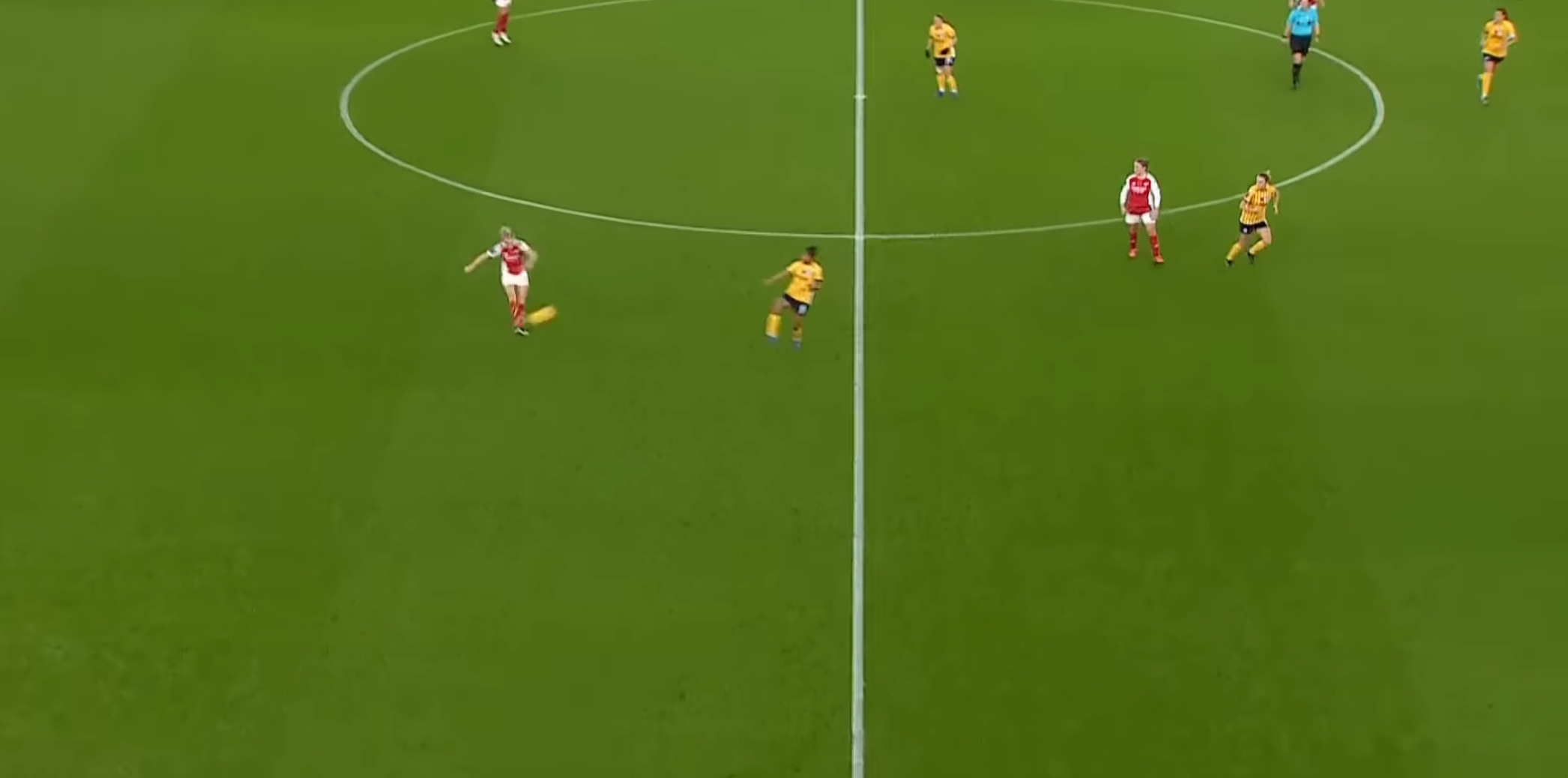
In general, Arsenal’s cleaner adoption of the 325 build-up shape is creating greater centrality in the team’s attacks, with Mariona drifting inside, allowing us to see dual 10s with Mariona as the left 10 and Maanum as the right 10. Maanum and Mariona combined in the build-up to the first and third goals on Saturday.
While Williamson’s passing has always been venerated as her strongest attribute, her defensive qualities are returning to the fore as well. Arsenal have conceded one goal since the return from the international break, from a corner at Manchester United. Some of this is due to the level of opponent Arsenal have played recently, admittedly (though I think Juventus are probably better than the 4-0 score line suggested).
Much of it is down to a superior structure. Sarina Wiegman’s England team has not been well structured out of possession at all over the last year or so. In fact, Williamson, who played on the left of the defensive duo against Germany, was often asked to essentially shuffle over to left-back in possession.
It was an ugly in and out of possession structure and she was not the only England defender to look lost in that framework. Millie Bright was no more convincing and often totally isolated by the structure while Jess Carter was asked to push on as a left wing-back for reasons I simply cannot fathom. Only Lucy Bronze was asked to play vaguely to her long established strengths.
Better fitness and a superior structure are extraneous factors that have certainly allowed Williamson to revert to her best form again pretty quickly. But it also speaks to a mental steeliness the best players have. Williamson responded not with words but with deeds, she didn’t complain (at least not publicly) and she has corrected on the pitch. This is what the best players do.

